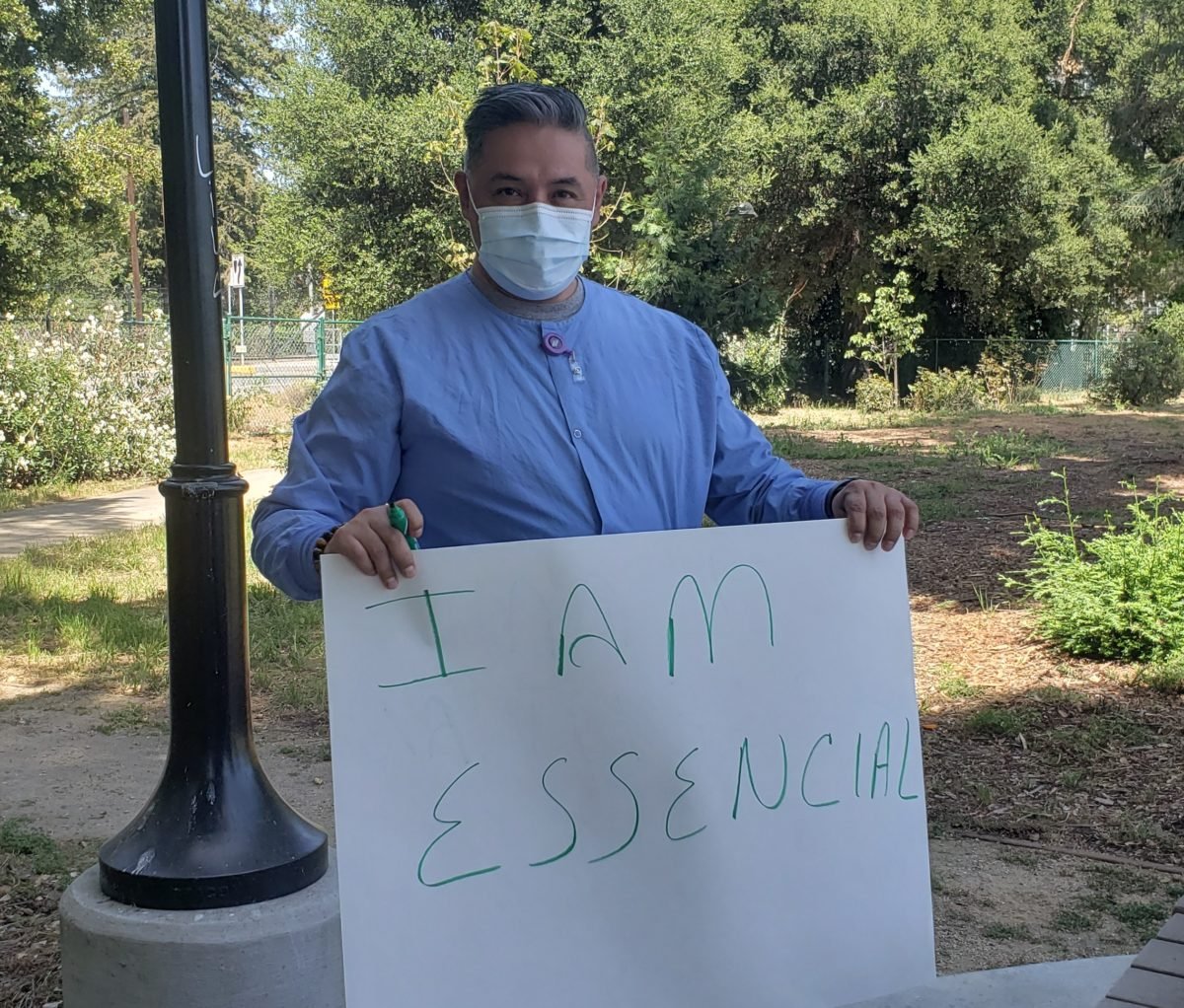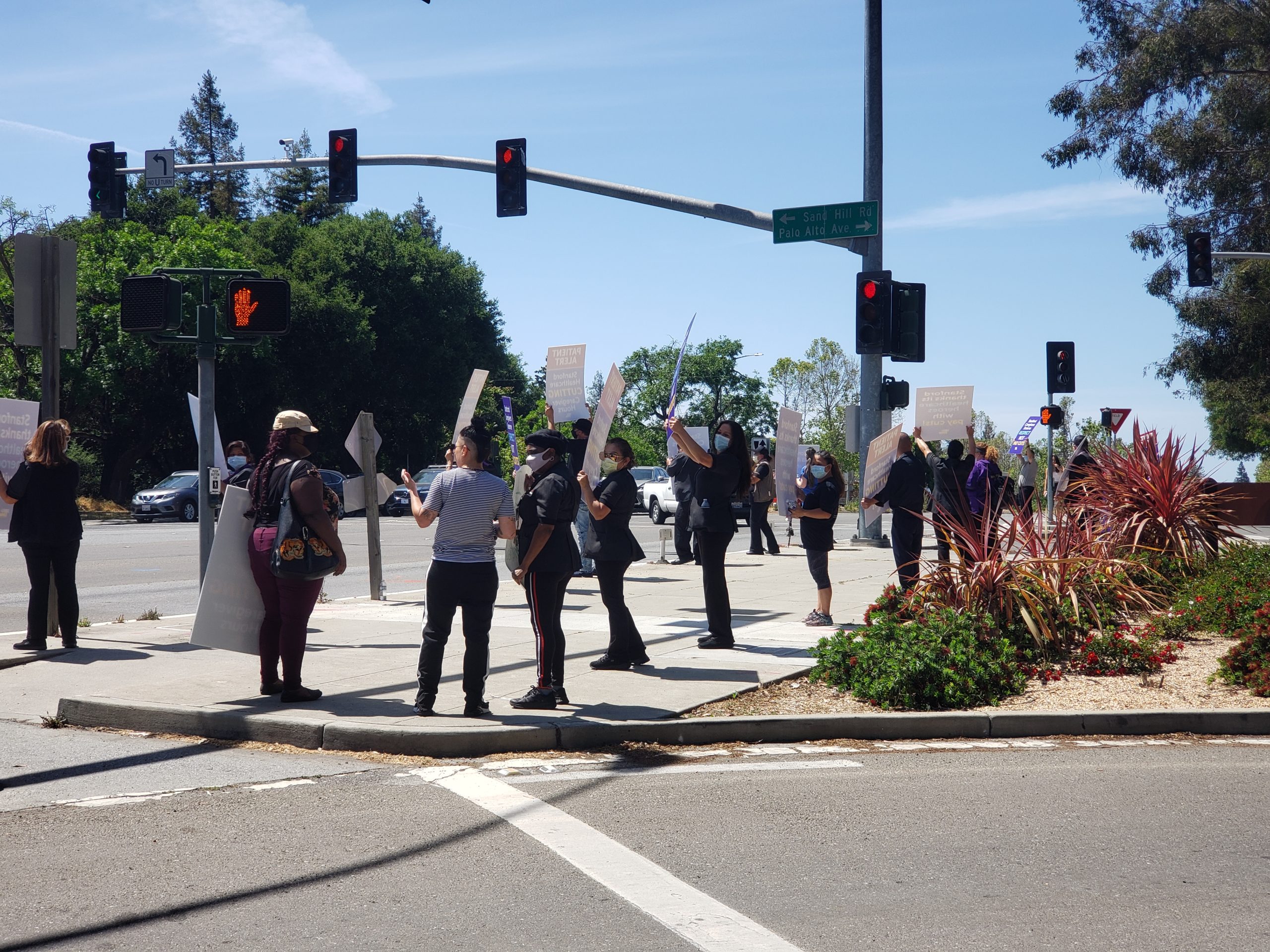Frontline healthcare workers gathered on Thursday to protest Stanford Health Care’s “temporary workforce adjustment program,” which requires that employees choose between being furloughed, taking paid time off (PTO) or accepting a 20% pay cut.
Healthcare workers held signs with statements like “Stanford thanks its healthcare heroes with pay cuts!” and “Stanford caregivers deserve respect” at the intersection of Sand Hill Road and El Camino Real as cars drove by and honked in support. Stanford Students for Workers’ Rights (SWR) joined in for part of the protest.
“When you live check by check, and when they take money from you that you already considered to be in your pocket, it’s hard,” said Stanford Health Care housekeeper Leonardo Copca, holding a handmade “I AM ESSENCIAL” sign referencing the Portuguese spelling of “essential.”
More than 99% of staff have opted to use PTO to prevent a loss of wages, according to Stanford Health Care spokesperson Julie Greicius. Employees have also been given the option to go into a “negative PTO balance” to prevent the loss of wages, Greicius said.
But PTO also presents the following problem: Accumulated PTO alone is often not enough to cover the pay cuts and going negative means no PTO in future years. Workers say this is not a reasonable solution.
“Some workers won’t have any available sick time or vacation time for two to three years,” said Stanford Health Care Unit Secretary Linda Cornell.
The lowest paid employees at hospitals, like the housekeeping and dietary staff, are the hardest hit by the adjustment, said Stanford Health Care lab technician Amanda Arrambide.
“These are the people that rely on two or more jobs to make it here in the Bay Area,” Arrambide said. “If this is about money, we know Stanford has money in their bottom line.”

Stanford Health Care spokesperson Lisa Kim attributed the decision to implement the temporary workforce adjustment program, which took effect on April 27 and is set to expire in July, to the “unprecedented economic impact of COVID-19.” The program, described as a temporary workforce adjustment, was presented to employees as a “shared sacrifice.”
Stanford Health Care has only recently resumed elective surgeries — responsible for a significant portion of Stanford Health Care’s revenue — following a two-month hold on such procedures to prepare for a surge of COVID-19 cases. Santa Clara County’s shelter-in-place order extension has continued to depress patient volumes, according to Greicius.
Greicius did not comment on what conditions would need to be in place for Stanford Health Care to roll back the adjustment program.
SEIU-United Healthcare Workers West spokesperson Steve Trossman said the adjustment program was unnecessary given Stanford’s endowments, Stanford Health Care’s reserves and the more than $102 million in funding it received through the CARES Act.
“Most people look at these healthcare workers treating COVID-19 patients under incredibly stressful conditions and see them as healthcare heroes, but Stanford just sees them as another line on a balance sheet,” Trossman wrote in a statement to The Daily.
SWR member Ethan Chua ’20 said the decision to implement the adjustment program struck him as “unreasonable” and “bizarre,” describing the program as a “choice that’s not really a choice.”
“When it comes to a crisis situation where we need healthcare workers, why would Stanford Health Care think it is okay to just cut their pay or force them to take vacation time?” Chua said.
More than 700 employees have signed an open letter to Stanford Health Care requesting that Stanford tier its approach to workforce adjustments by salary, exempting those earning less than $100,000 a year; use voluntary furlough days from some employees to reduce mandatory burdens on other employees; and provide greater transparency about the numbers behind the program.
“It’s unconscionable that Stanford would do this to many of us long-term employees that have dedicated our lives to working here,” said Cornell, who has worked at Stanford Health Care for over 40 years. “I can’t pay my bills if I don’t have income.”
